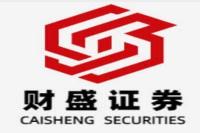小米SU7低温续航测试夺冠:新能源汽车冬季续航挑战与应对策略
元描述: 小米SU7在汽车之家2024年冬季续航测试中荣获冠军,本文深入探讨新能源汽车冬季续航问题,分析小米SU7成功秘诀,并展望行业发展趋势,涵盖电池技术、电机技术、续航里程、低温性能等关键词。
Wow! The cold snap has hit, and with it, a renewed focus on something crucial for electric vehicle (EV) owners: range anxiety. Especially in those sub-zero temperatures, that battery life can plummet faster than a snowball in Hades! But hold onto your hats, folks, because a new champion has emerged from the frosty fray: Xiaomi's SU7. This isn't just another press release; we're diving deep into the data, analyzing the implications for the EV market, and exploring what this means for the future of winter driving. From the cutting-edge battery management systems to the innovative thermal designs, we're pulling back the curtain on the tech that's making a real difference. This isn't just about numbers; it's about the peace of mind drivers crave, especially when the mercury drops. We'll be looking at the broader picture too – how other manufacturers are tackling the winter range challenge, the latest advancements in battery technology, and what you, the consumer, can expect in the coming years. Get ready for a comprehensive look at the world of EV winter performance – it's going to be electrifying!
新能源汽车冬季续航测试:小米SU7的突出表现
The recent Autohome 2024 winter testing program threw down the gauntlet for China's burgeoning EV market. And Xiaomi's SU7 answered the call, emphatically. The results? Absolutely stunning. In the -25℃ to -20℃ extreme cold test, the SU7 Max, equipped with a dual-motor all-wheel-drive system (a setup that typically increases energy consumption!), achieved a remarkable 385km of actual range, beating the second-place contender by a whopping 48.8km! In milder -5℃ to 15℃ conditions, the SU7 Max exceeded expectations with a 737km range, a full 19.5km ahead of the competition. This wasn't just a fluke; this showcases Xiaomi's commitment to engineering excellence and their thoughtful approach to battery management and thermal control.
This achievement is particularly noteworthy because all-wheel-drive EVs often face a greater challenge in maximizing range due to the added power consumption of a second motor. Xiaomi's success here points to sophisticated power management algorithms and potentially, innovative thermal design elements that minimize energy loss in cold climates. This success isn’t just a PR win; it’s a testament to tangible engineering advancements. The SU7 Max is not just boasting about range; it's delivering on it, even in the harshest winter conditions!
小米SU7续航里程的优势:技术创新与策略分析
So, what's the secret sauce behind the SU7's exceptional winter performance? It's a blend of several factors, each contributing to its impressive range:
-
Advanced Battery Management System (BMS): A sophisticated BMS is the brain of the operation, optimizing battery charging and discharging processes to maximize efficiency and longevity, especially crucial in cold weather. Think of it as a highly trained conductor leading an orchestra of battery cells, ensuring harmonious and efficient power delivery.
-
Innovative Thermal Management: Cold temperatures significantly impact battery performance. Xiaomi's SU7 likely incorporates a highly effective thermal management system (perhaps advanced heating elements or even a more efficient cooling system), maintaining optimal operating temperatures even in sub-zero conditions.
-
Aerodynamic Design: While not explicitly detailed, a streamlined body design can contribute to improved efficiency and extended range by reducing wind resistance.
-
Efficient Powertrain: The dual-motor all-wheel-drive system, while usually energy-intensive, seems to have been meticulously optimized in the SU7, highlighting the prowess of Xiaomi's engineering team.
-
Software Optimization: Intelligent software algorithms play a crucial role in range optimization by adapting driving behavior and power distribution based on real-time conditions. It's like having a seasoned winter driving instructor constantly adjusting driving parameters for optimal efficiency.
新能源汽车行业冬季续航挑战
The SU7's success isn't just about one car; it highlights the broader challenges and opportunities within the EV sector regarding winter performance. Many EV models experience significant range reduction in cold weather. This is primarily due to the chemical properties of lithium-ion batteries, which become less efficient at lower temperatures. This affects not just range but also charging speeds.
Furthermore, extreme cold can lead to battery degradation over time, impacting the long-term value of the vehicle. This necessitates designing for robust cold-weather performance from the outset, rather than treating it as an afterthought. The competition is fierce, and manufacturers are constantly striving for improvement.
其他新能源汽车厂商的冬季表现
While Xiaomi SU7 made headlines, other manufacturers are also making strides in tackling the winter range challenge. The November 2024 delivery figures for various EV brands show impressive growth, showcasing a healthy and competitive market:
| Brand | November Deliveries | Year-on-Year Growth (%) | Notes |
|-----------------|----------------------|-------------------------|----------------------------------------|
| BYD | 506,800 | 40.02 | Continued market dominance |
| Li Auto | 48,740 | 18.8 | Strong growth, despite cold weather |
| NIO | 20,575 | N/A | Consistent performance above 20,000 units |
| Xpeng | 30,895 | 54 | Significant growth, exceeding 30,000 units |
| Leapmotor | 40,169 | 117 | Remarkable growth, exceeding 40,000 units |
| GAC Aion | 42,301 | N/A | Consistent positive growth |
| Zeekr | 27,011 | 106 | Three consecutive months of record highs |
| Lantu | 10,856 | 55 | Three consecutive months exceeding 10,000 units |
| Zhiji | 10,007 | N/A | Consistent growth |
This data underscores the intense competition in the EV market and the continuous efforts by manufacturers to improve overall performance, including winter capability.
常见问题解答 (FAQ)
Q1: How does cold weather affect EV battery performance?
A1: Cold temperatures reduce the chemical activity within the lithium-ion battery, leading to decreased capacity and slower charging speeds. Think of it like trying to run a race in freezing temperatures – your performance is significantly hampered.
Q2: What are the key innovations contributing to improved EV winter range?
A2: Key innovations include advanced battery management systems (BMS), improved thermal management systems (heating and cooling), aerodynamic design optimizations, and intelligent software algorithms that adjust driving parameters based on conditions.
Q3: Is all-wheel drive always better in winter for EVs?
A3: Not necessarily. While all-wheel drive provides better traction, it also increases energy consumption, potentially offsetting the range benefits. A well-optimized system, as seen in the Xiaomi SU7, can mitigate this drawback.
Q4: How can I maximize my EV's range in winter?
A4: Pre-condition your car before driving, minimize rapid acceleration and braking, use regenerative braking effectively, and avoid unnecessary idling. Also, consider pre-heating/pre-cooling while still plugged into a charger.
Q5: What are the future trends in EV winter performance?
A5: We can expect further advancements in battery chemistry (like solid-state batteries), more efficient thermal management systems, and increasingly sophisticated software algorithms for range optimization.
Q6: Are there any government regulations or incentives related to EV winter performance?
A6: Currently, specific regulations concerning EV winter performance are still emerging. However, general regulations around safety and emission standards indirectly encourage improvements in overall vehicle efficiency, including winter performance. Incentives might emerge as consumer demand and technological advancements continue.
结论
The Xiaomi SU7's triumph in the Autohome winter testing underscores a significant leap forward in EV technology. Its impressive performance, especially considering its dual-motor setup, showcases the power of thoughtful engineering and innovative solutions. While range anxiety remains a concern for many EV drivers, particularly during winter months, the advancements demonstrated by Xiaomi and other manufacturers offer a promising outlook for the future. The race for superior winter performance is far from over, but the strides made are undeniable. The future of EVs is bright, even when the weather isn't.



